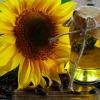CYBERMED LIFE - ORGANIC & NATURAL LIVING
CYBERMED LIFE - ORGANIC & NATURAL LIVING
 Oil pulling is an alternative medical practice in which oil is "swished" around the mouth. The claims made for the benefits of oil pulling are implausible, and there is no good evidence that it is of any health benefit.
Oil pulling is an alternative medical practice in which oil is "swished" around the mouth. The claims made for the benefits of oil pulling are implausible, and there is no good evidence that it is of any health benefit.
Practitioners of oil pulling claim it is capable of improving oral and systemic health, including a benefit in conditions such as headaches, migraines, diabetes mellitus, asthma, and acne, as well as whitening teeth. Some of its promoters claim it works by "pulling out" toxins, which are known as ama in Ayurvedic medicine, and thereby reducing inflammation. There is no credible evidence to support this.
Research into oil pulling has not been of good quality. There is no good evidence that oil pulling has any benefit for oral health.
The Canadian Dental Association, responding to published research, has stated that "We sense oil pulling won't do any harm, we're not convinced there are any particular benefits to it."
The practice of oil pulling was examined by Steven Novella and reported on in a March 2014 article in Science-Based Medicine. The analysis concluded:
Oil pulling is a suggestive misnomer, implying that something bad is being pulled from the mouth (toxins and bacteria). What little scientific evidence exists shows that it is probably not as effective as standard mouth wash, and what benefit it has is likely entirely due to the mechanical act of swishing to remove particles and bacteria from teeth and gums ... Oil pulling for general health or any other indication is pure pseudoscience. Detox claims are based on nothing, as are all detox claims. There is no evidence or plausible rationale to recommend oil pulling for any indication other than as a poor substitute for oral care.
Oil pulling stems from traditional Ayurvedic medicine. In case of specific issues, Ayurvedic practitioners might also suggest other treatments such as coconut oil and sunflower oil or other herbalized oils after proper diagnosis of the specific ailment or dosha.
Historically, India has used oil pulling as a different approach in preserving oral health and it is now growing in popularity in the 21st century. Although it is controversial in the world of dentistry with there being limited resources to support its efficacy, it is said that it can be used as an adjunct therapy to conventional dental home care therapies in the reduction of bacterial load in the oral cavity. Its growing popularity is a result of the fact that it is cost-effective, easily accessible, and contains natural ingredients.